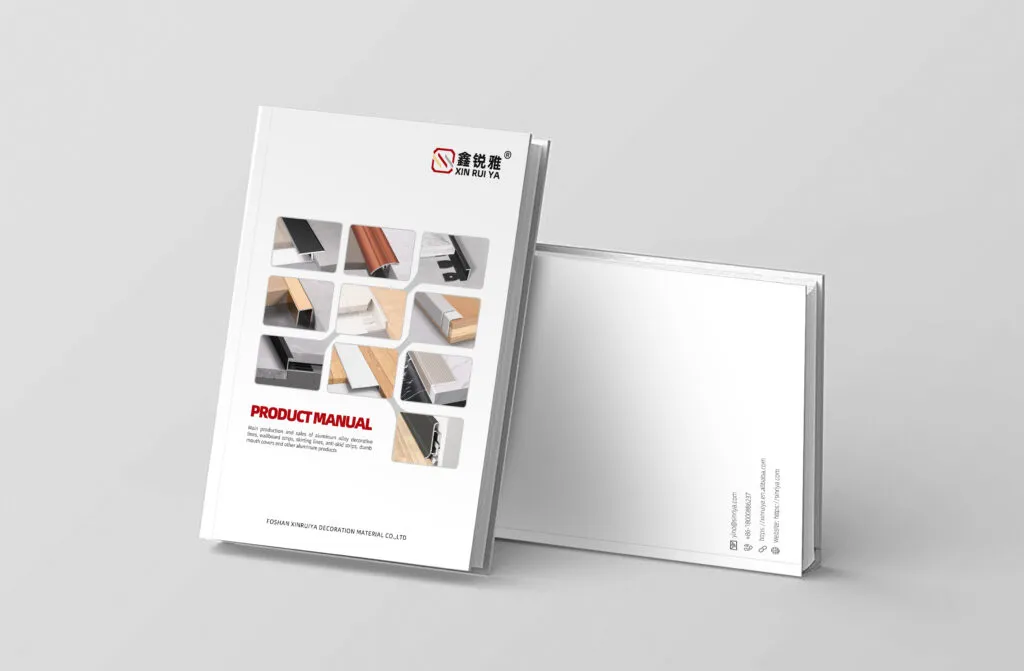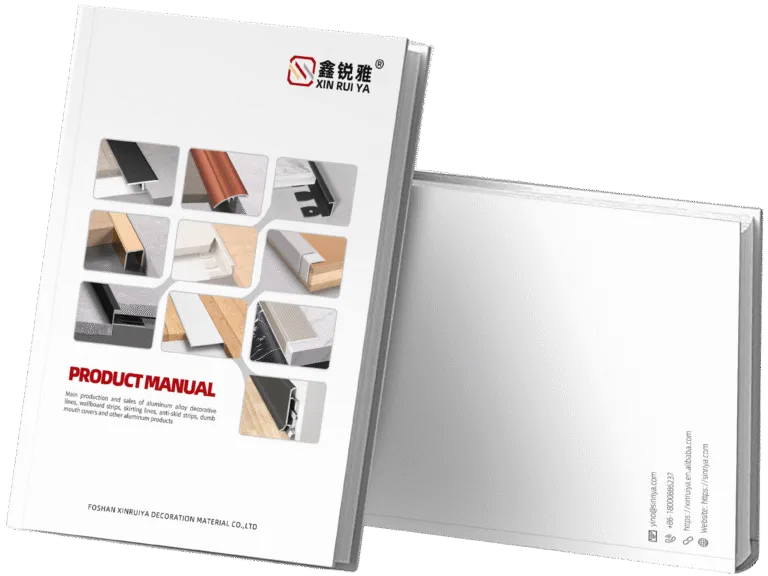
Hi everyone, I’m Leo Liang, your friendly neighborhood home improvement expert. Perhaps you’re already familiar with me by my B2B home materials website, Sinriya.com, or perhaps we’ve met on social media where I’m always sharing about my passion for quality building materials. It’s not a business for me; it’s really an interest in how the materials make the homes that we live in. Today, I’m excited to dive deep into a product that I firmly believe is one of the most innovative and underappreciated corners of contemporary design: aluminum trim. We’re going to talk about how the unsung part is revolutionizing remodels in 2025, connecting the dots from tile installation to acoustic design. So brew a cup of coffee, and let’s go over the details that make all the difference.
Why Is Aluminum Trim the Unsung Hero of Modern Tiling?
When you’re planning a project, especially in a moisture-rich area like a bathroom, the focus is often on the big-ticket items: the perfect tiles bathroom wall, the vanity, the fixtures. But what about the edges? For years, bulky bullnose tiles or messy caulk lines were the standard. I’m here to tell you, those days are over. Aluminum trim has completely changed the game. It’s not just something to wrap the edge of a tile so it doesn’t chip; it’s a style. Long-time players like Schluter Systems have been at the forefront of this trend with profiles offering clean lines and high-end look that caulking can’t even get close to. Just think about that super-trendy sleek, minimalist style that’s all the rage right now. You have that with the clean, sharp end termination an aluminum profile offers.
The material used is also a major contributor to its quality. Every quality trim is made of 6063-T5 aluminum alloy, a material of superior value for its superior corrosion resistance, excellent surface finish, and strength. The tensile strength of the alloy is around 186 MPa, which makes it a very tough material for its lightness. When installing tile, you start with a solid base. That means utilizing the use of a quality underlay tile. An underlayment is significant since it provides a solid, even foundation, provides a moisture barrier, and can guarantee that subfloor cracks won’t telegraph through to your expensive tiles. Your underlayment is going down and your tile is getting installed when the aluminum trim comes in with them, anchored into the same thin-set mortar. It is the connection that makes it solid. Profiles come in a variety of shapes—L-shape, square-edge, and rounded or “bullnose” quadrant profiles—and in heights to accommodate typical tile thicknesses, from 1/4″ (6mm) to 1/2″ (12.5mm) and beyond. The end result is a perfect, flush finish each time, making a functional requirement a thoughtful, beautiful element of your design.
How Do You Get Perfect Holes in Tile and Glass?
Let’s talk about a situation that will have even the experienced installers break into a cold sweat: drilling across new tile or new glass shower panel. One miscalculation, one too high heat or pressure, and you’ve got a very expensive crack. Here is where having the right tools isn’t just a nicety; it’s a necessity. The secret is to know what drill bit to use on the material. For most bathroom wall tile installations, especially those with dense porcelain, the professional’s go-to tool is a diamond-tipped drill bit. Diamond is the hardest material and grinds down the tile rather than trying to cut it, which makes it much less probable to crack it. Diamond-coated bits will typically need to be cooled with water so they do not overheat and lose the diamond coating.
For the more delicate ceramic tiles, a tungsten carbide-tipped spear-head bit will typically work. The spear-like shape helps to initiate the hole without chipping the tile’s glaze. But if you’re working with both ceramic and porcelain, investing in a quality diamond bit set is the way to go, as it can handle both materials effectively. Now, what about glass? A glass drill bit is also typically diamond-tipped, but it’s crucial to use a slow speed and lubricant (even just water will do) to keep the temperature down. Heat is the enemy of glass. The process involves starting the hole at an angle to create a small notch, then gradually bringing the drill to a 90-degree angle to complete the hole. With the right set of tile tools—that is, these specialist bits—is an absolute part of my E-E-A-T (Experience, Expertise, Authoritativeness, Trustworthiness) ethos. Trying to install with a general-purpose bit is tampering with fire and jeopardizes the entire installation’s quality.
Can You Make Your Ceilings More Than Just a Flat Plane?
Ceilings have been the forgotten “fifth wall” of interior design for too long. That’s an enormous missed opportunity! One of the finest ways to add architectural interest overhead is with a suspension ceiling tiles system, or drop ceiling. While this can call to mind old office buildings, modern systems are very clean and versatile. The grid system is the key to an upscale look, and this is another area aluminum trim shines. A suspended ceiling edge is framed by an L-shape trim or wall angle supporting the ends of the principal grid runners. The use of an extruded aluminum trim for this purpose creates a clean, straight edge that meets the wall.
Modern grid systems offer more than the standard 15/16″ (24mm) face. You can also get narrow-profile grids that are 9/16″ wide, which emphasize the tiles more and the grid less. For a very minimalist look, hidden grid systems cover up the metal framework entirely, giving a monolithic look. Hidden grid systems are often applied with ceiling acoustic tiles to enhance sound absorption. And if you’re not installing a full drop ceiling, there are alternative ceiling covers and design tactics. Coffered ceilings, ceiling planks, or even high-gloss stretch ceilings can redo a room. In all these uses, aluminum trim can be employed to craft clean breaks, edge recessed light, or create a touch of subtle metallic detail. It’s all about employing these materials mindfully to introduce depth and sophistication.
What’s the Secret to a Truly Quiet and Peaceful Room?
In our noisier-than-ever world, creating a sanctuary of peace at home or an efficient, focused room in the office is a luxury. It’s here that acoustic design becomes the center of attention. It’s not just about keeping rowdy outside noises out; it’s about sound control in a room. This is accomplished with a combination of materials, and the acoustic wall paneling is just the thing. These panels, made from something like mineral wool or high-density foam with a fabric finish, are actually employed to contain sound waves, reducing echo and reverberation. And what about those edges? You guessed it: aluminum trim. With an aluminum U-channel or F-profile housing the panels, it provides a crisp, sturdy, and pleasing appearance. It elevates the installation from one of functionality to one of deliberate architectural design.
The ceiling also plays its equal part with regards to acoustics. Utilizing ceiling acoustic tiles to replace normal suspension tiles can be influential. They are designed to have porous components or perforated facias in order to absorb sound. In fact, aluminum ceiling tiles can be perforated and backed with insulation to provide extremely high sound absorption with an NRC rating of 0.75 or greater. Open areas can be met by employing suspended aluminum “clouds” or baffles to divide up individual areas and combine sculptural form and intense acoustic control. The effectiveness of any acoustic treatment is based upon a systems approach—treating walls and ceilings at the same time in order to create a balanced and comfortable sound environment.
Are You Treating Sound Leaks from the Ground Up?
Another myth I come across is that people are spending a lot of money on acoustic walls and ceilings but nothing for the floor whatsoever. Sound, especially impact noise like foot traffic, radiates through the building structure. If you’re dedicated to silence, you need to start over with a soundproofing mat. These are dense, rugged underlayment, often recycled rubber, that separates the finished floor from the subfloor. This decoupling process takes the energy of footsteps and prevents it from radiating downward into the room below.
When you’re laying down a tile floor, this is particularly crucial. Hard floorings like tile are excellent at transmitting impact sound. By putting a specific soundproofing mat over tile, you gain the bonus of both sound reduction and an uncoupling membrane. You first put down the soundproofing mat, typically installed to the subfloor. Then you put the tile right over the mat with a modified thin-set mortar. This is different from a standard tile underlay, which is purely for waterproofing and crack isolation, although more recent products encompass all of these elements. It’s especially required in apartments, multi-residence houses, and commercial buildings where noise transmission between floors is a critical concern. It’s a building block of a successful soundproofing strategy that ensures quietness is a consideration, not an afterthought.
How Can Aluminum Trim Blend with Evolved Wall Systems?
As we move forward in design and construction, we’re beyond the era of bare flat walls. Advanced systems that combine appearance and function are the new standard. Aluminum trim is a vital part of such complex designs. Think, for example, of the installation of big-sized acoustic wall paneling. The panels have to be secured safely while also allowing room for a clean, intentional joint. Specialty aluminum extrusions like shadow gap trims (also known as reveal trims) are the perfect solution for this. Shadow gap trims create a recessed channel between panels or where the panel intersects the ceiling, creating a floating, high-end appearance of the wall. The technique is traditionally used in commercial spaces like theaters, boardrooms, and high-end retail to achieve an illusion of depth and sophistication.
The compatibility with other materials is also crucial. Imagine a bathroom wall that tapers from large porcelain tile to a slatted wood-grained acoustic panel. An aluminum profile provides the perfect, clean transition point between these two materials. It can be finished to match the style of bathroom hardware (like matte black or brushed nickel) to provide a cohesive look to the whole design. The 6063-T5 aluminum used to manufacture these profiles can be anodized or powder-coated in virtually any hue, offering enormous design freedom. This allows the trim to either dissolve into the adjacent surfaces or become a bold accent. For B2B clients doing large projects, the detailing of these combined trim systems is a representation of quality and attention to detail. It’s an indication that there’s a thorough understanding of how different materials work to create a cohesive and durable final result.
What tools would a professional need to use?
As a construction and design professional, I want to emphasize enough the significance of utilizing proper tile tools. The quality of your finish is only as good as the quality of your tools and your ability to utilize them. For making cuts on aluminum trim, a fine-toothed blade miter saw specifically designed for non-ferrous metal is used to make neat, precise 45-degree corners. Straight cuts will do with a standard hacksaw, but for top-grade finishes, the miter saw is not on the agenda. For tiling, a notched trowel of the appropriate notch size for your mortar and tile is mandatory for effective adhesive coverage.
I’ve mentioned already the importance of the correct tile drill bit and glass drill bit, but other equipment is just as vital. A decent height, tile spacers for uniform grout lines, a rubber mallet for gently setting tiles and trims, and a grout float are all part of an average professional set. When you see a beautifully executed tile installation, with absolute edges and line-to-line repetition, it’s not just the work of a good designer—it’s the work of a proficient installer who has a regard for his craft sufficient to use the right tools for each detail. This commitment to quality is what makes a day job into an exceptional one, and it’s one of the core principles I apply with each project and each product I support through Sinriya.
Your 2025 Renovation Blueprint
Moving forward, the trend is clear: decent design is all about nicely mixing up materials. It is all about realizing pieces like aluminum trim not as an afterthought but as a critical element that closes gaps, provides definition, and redefines the entire project. From creating a durable and stylish edge for your bathroom tiles wall to housing classy acoustic wall paneling and finishing the look for suspension ceiling tiles, its flexibility has no rival. By starting with a solid foundation through the implementation of the appropriate tile underlay and soundproofing mat, and the appropriate tile tools like a professional tile drill bit, you produce a design that is not only good to the eye but also durable. The modern home and business are systems—and understanding how each component effects the whole is the key to creating spaces that are truly remarkable.
If you’re embarking on a project and need guidance or are a B2B client looking for high-quality aluminum products and expert advice, don’t hesitate to visit me at sinriya.com or connect with me on social media. Let’s build something amazing together.
References
- Schluter-Systems. (2024, February 27). Schluter®-Systems – Solutions With Profiles [Video]. YouTube. https://www.youtube.com/watch?v=kYx8D1gGg5Q
- Schluter. (n.d.). Profiles. Retrieved June 27, 2025, from https://www.schluter.com/schluter-us/en_US/profiles/c/P
- Topps Tiles. (n.d.). What type of drill bit for tiles. Retrieved June 27, 2025, from https://www.toppstiles.co.uk/knowledge-base/what-type-of-drill-bit-for-tiles
Focus Keywords
- Aluminum trim
- Acoustic wall paneling
- Tiles bathroom wall
- Suspension ceiling tiles
- Tile tools






